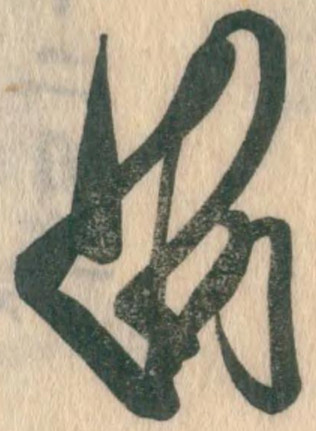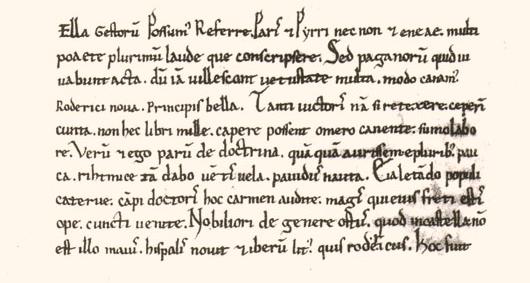|
Kumasaka
''Kumasaka'' (The Robber) is a Noh play from the 15th century. Arthur Waley attributes it to Zenchiku Ujinobu and it concerns the notable Heian period bandit Kumasaka no Chohan. The play takes the form of a dream-time Mugen Noh. Legendary background The samurai hero, Minamoto no Yoshitsune (known in his early life as Ushiwaka) had a series of encounters attributed to him in his youth, one of which concerned repelling a bandit attack led by Kumasaka. Kumasaka is sometimes identified as the slayer of Yoshitsune's mother. Plot A travelling monk is offered shelter by another, on condition that he prays for an anonymous soul buried by a pine tree. The traveler is surprised to see a large pike hanging on the cottage wall, and the other reveals his past as a robber before vanishing. This reveals to the priest that "It was under the shadow of a pine-tree that he had rested". Thereafter, the robber reappears as the ghost of Kumasaka and recounts the story of his last fight and his dea ... [...More Info...] [...Related Items...] OR: [Wikipedia] [Google] [Baidu] |
Minamoto No Yoshitsune
was a commander of the Minamoto clan of Japan in the late Heian period, Heian and early Kamakura period, Kamakura periods. During the Genpei War, he led a series of battles that toppled the Ise-Heishi branch of the Taira clan, helping his half-brother Minamoto no Yoritomo, Yoritomo consolidate power. He is considered one of the greatest and the most popular warriors of his era, and one of the most famous samurai in the history of Japan. Yoshitsune perished after being betrayed by the son of a trusted ally and was labelled as a tragic hero. Early life Yoshitsune was the ninth son of Minamoto no Yoshitomo, and the third and final son and child that Yoshitomo would father with Tokiwa Gozen. Yoshitsune's older half-brother Minamoto no Yoritomo (the third son of Yoshitomo) would go on to establish the Kamakura shogunate. Yoshitsune's name in childhood was or ''young bull'' (). He was born just before the Heiji Rebellion in 1160 in which his father and two oldest brothers were kil ... [...More Info...] [...Related Items...] OR: [Wikipedia] [Google] [Baidu] |
Eboshi-ori
is a Noh play of the 16th century by . The play falls into the category of Noh#Theme, genzai-mono, or present time plays, where the action takes place consecutively, without the (more usual) retrospective flashback. Historical setting The play takes place during the youth of the samurai leader Minamoto no Yoshitsune, then known as Ushiwaka or Young Bull, at a time when (following the Hōgen rebellion), the Taira clan were in power in Japan. Ushiwaka was in seclusion at Kurama-dera, Kurama temple, where he was learning martial arts, supposedly at the hands of a goblin-like Tengu. Plot Ushiwaka absconds from the temple to join a merchant caravan, and to disguise himself orders an eboshi, or warrior hat, "folded to the left [as] in the time of the Minamoto clan". Though warned against this on the grounds that "after the years of Hōgen (era), Hōgen, the house of Hei [Taira] prevailed, and the whole land was theirs", he persists in his request, and on obtaining the eboshi, he offer ... [...More Info...] [...Related Items...] OR: [Wikipedia] [Google] [Baidu] |
Benkei On The Bridge
is a Japanese Noh play from the 15th century, by Hiyoshi Sa-ami Yasukiyo. Theme The play centres around the encounter between the giant warrior monk Benkei and the youthful Minamoto no Yoshitsune was a commander of the Minamoto clan of Japan in the late Heian period, Heian and early Kamakura period, Kamakura periods. During the Genpei War, he led a series of battles that toppled the Ise-Heishi branch of the Taira clan, helping his half-br ..., in which the slighter and younger man defeated the elder. The hand-to-hand bridge combat forged a lasting bond between the pair. Thereafter Benkei served as Yoshitsune’s second in command - as what Basho would describe as “his faithful retainer, Benkei”. Later developments Buson created a haiku and a haiku painting, ''Benkei and Young Bull'', around the themes of the play, quoting from it in his haiku:L Zolbrod, ''Haiku Painting'' (Tokyo 1982) p. 12-13 See also References {{Reflist, 2} External linksThe Noh Plays of Japan ... [...More Info...] [...Related Items...] OR: [Wikipedia] [Google] [Baidu] |
Arthur Waley
Arthur David Waley (born Arthur David Schloss, 19 August 188927 June 1966) was an English orientalist and sinologist who achieved both popular and scholarly acclaim for his translations of Chinese and Japanese poetry. Among his honours were appointment as Commander of the Order of the British Empire in 1952, receiving the Queen's Gold Medal for Poetry in 1953, and being invested as a Member of the Order of the Companions of Honour in 1956. Although highly learned, Waley avoided academic posts and most often wrote for a general audience. He chose not to be a specialist but to translate a wide and personal range of classical literature. Starting in the 1910s and continuing steadily almost until his death in 1966, these translations started with poetry, such as ''A Hundred and Seventy Chinese Poems'' (1918) and ''Japanese Poetry: The Uta'' (1919), then an equally wide range of novels, such as ''The Tale of Genji'' (1925–26), an 11th-century Japanese work, and ''Monkey'', fr ... [...More Info...] [...Related Items...] OR: [Wikipedia] [Google] [Baidu] |
Zenchiku Ujinobu
Konparu Zenchiku (; b. Shichirō UjinobuKomparu Zenchiku. (2007). In Encyclopædia Britannica. Retrieved November 11, 2007, from Encyclopædia Britannica Online: http://www.britannica.com/eb/article-9045984 () 1405–1468, 1470 or 1471) was a skilled Japanese Noh actor, troupe leader, and playwright. His plays are particularly characterized by an intricate, allusive, and subtle style inherited from Zeami Motokiyo which convolved yūgen with influences from Zen Buddhism (his Zen master was Ikkyū) and Kegon. Actors should strive for unconscious performance, in which they enters the "circle of emptiness"; such a state of being is the highest level of artistic or religious achievement. He lived, worked, and died in the Nara area of Japan. He was trained by Zeami and his son, Motomasa (died 1432), eventually marrying a daughter of Zeami. At some point he took the artistic name Komparu Ujinobu and then finally Konparu Zenchiku. In 1443, he became the leader of the Kanze acting troupe a ... [...More Info...] [...Related Items...] OR: [Wikipedia] [Google] [Baidu] |
Heian Period
The is the last division of classical Japanese history, running from 794 to 1185. It followed the Nara period, beginning when the 50th emperor, Emperor Kammu, moved the capital of Japan to Heian-kyō (modern Kyoto). means in Japanese. It is a period in Japanese history when the Chinese influence on Japanese culture, Chinese influences were in decline and the national culture matured. The Heian period is also considered the peak of the Japanese Emperors of Japan, imperial court, noted for its Japanese art, art, especially Japanese poetry, poetry and Japanese literature, literature. Two syllabaries unique to Japan, katakana and hiragana, emerged during this time. This gave rise to Japan's famous vernacular literature, with many of its texts written by court ladies who were not as educated in Chinese as their male counterparts. Although the Imperial House of Japan had power on the surface, the real power was in the hands of the Fujiwara clan, a powerful Kuge, aristocratic family wh ... [...More Info...] [...Related Items...] OR: [Wikipedia] [Google] [Baidu] |
Pike (weapon)
A pike is a long thrusting spear formerly used in European warfare from the Late Middle Ages and most of the early modern warfare, early modern period, and wielded by infantry, foot soldiers deployed in pike square formation, until it was largely replaced by bayonet-equipped muskets. The pike was particularly well known as the primary weapon of Spanish tercios, Swiss mercenary, German Landsknecht units and French sans-culottes. A similar weapon, the sarissa, had been used in classical antiquity, antiquity by Alexander the Great's Ancient Macedonians, Macedonian phalanx infantry. Design The pike was a long weapon, varying considerably in size, from long. Generally, a spear becomes a pike when it is too long to be wielded with one hand in combat. It was approximately in weight, with the 16th-century military writer John Smith (High Sheriff of Kent), Sir John Smythe recommending lighter rather than heavier pikes. It had a wooden shaft with an iron or steel spearhead affixed. Th ... [...More Info...] [...Related Items...] OR: [Wikipedia] [Google] [Baidu] |
Kurama-tengu
is a Noh play from the fifteenth century, concerned with the childhood experiences of the samurai hero Minamoto no Yoshitsune. Plot The play begins with a Hanami, cherry blossom viewing expedition involving monks and children from Kurama-dera, Kurama temple. On being joined by a rough Yamabushi - an ascetic mountain priest - the party leaves in protest, with the exception of one child, who reveals himself as the young Yoshitsune, isolated at the temple both as an orphaned son and as the only child from the (eclipsed) Genji clan. The stranger reveals himself in turn as the head Tengu, or long-nosed goblin; and he proceeds to instruct the young hero in the martial arts, with a view to him avenging his slaughtered father's death. Characteristics *The play is notable for the large cast of child actors, and for the range of actions - chanting; acting; swordplay - which they undertake. *Critics have seen elements of homoeroticism in the relationship between the (phallicized) Yamabus ... [...More Info...] [...Related Items...] OR: [Wikipedia] [Google] [Baidu] |
Renga
''Renga'' (, ''linked poem'') is a genre of Japanese collaborative poetry in which alternating stanzas, or ''ku (''句), of 5-7-5 and 7-7 morae (sound units, not to be confused with syllables) per line are linked in succession by multiple poets. Known as ''tsukuba no michi'' ( ''The Way of Tsukuba'') after the famous Tsukuba Mountain in the Kantō region, the form of poetry is said to have originated in a two-verse poetry exchange by Yamato Takeru and later gave birth to the genres '' haikai'' () and haiku ().Kaneko, Kinjirō. ''Rengashū, Haikaishū''. Tōkyō: Shōgakkan, 2001. Print. The genre was elevated to a literary art by Nijō Yoshimoto (, 1320–1388), who compiled the first imperial renga anthology '' Tsukubashū'' () in 1356. The most famous renga master was Sōgi (, 1421–1502), and Matsuo Bashō (, 1644–1694) after him became the most famous ''haikai'' master. Renga sequences were typically composed live during gatherings of poets, transcribed oral sessio ... [...More Info...] [...Related Items...] OR: [Wikipedia] [Google] [Baidu] |
El Cid
Rodrigo Díaz de Vivar ( – 10 July 1099) was a Castilian knight and ruler in medieval Spain. Fighting both with Christian and Muslim armies during his lifetime, he earned the Arabic honorific ("the Lord" or "the Master"), which would evolve into El Çid (, ), and the Spanish honorific El Campeador ("the Champion"). He was born in Vivar del Cid, Vivar, a village near the city of Burgos. As the head of his loyal knights, he came to dominate the Levante, Spain, Levante of the Iberian Peninsula at the end of the 11th century. He reclaimed the Taifa of Valencia from Moorish control for a brief period during the ''Reconquista'', ruling the Lordship of Valencia, Principality of Valencia from 17 June 1094 until his death in 1099. His wife, Jimena Díaz, inherited the city and maintained it until 1102 when it was reconquered by the Moors. Díaz de Vivar became well known for his service in the armies of both Christian and Muslim rulers. After his death, El Cid became Spain's most cel ... [...More Info...] [...Related Items...] OR: [Wikipedia] [Google] [Baidu] |




